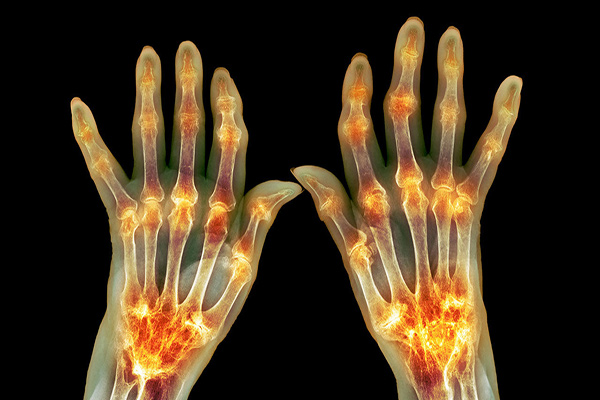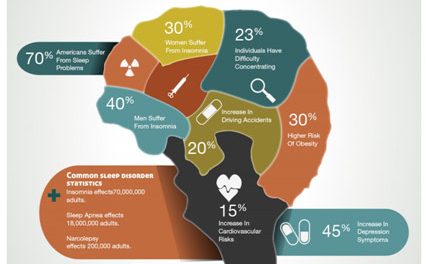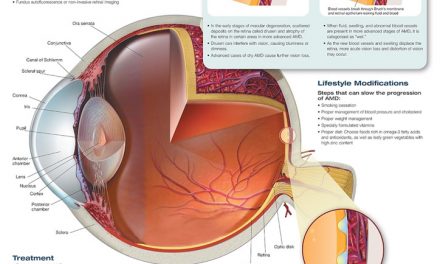Rheumatoid Arthritis (RA) is a chronic disease that affects about 1.5 million Americans. Joints are what connect multiple bones together, and they are designed “to absorb shock and allow smooth movement between bones,” according to the Rheumatoid Arthritis Support Network. Joints can be classified into three major structural types: fibrous (fixed) joints, cartilaginous (partly movable joints), and synovial (movable) joints. Fibrous joints can be further classified as being a suture, syndesmosis, and gomphosis. An example of a fibrous joint (specifically a suture) is joints that connect the different bones of the skull. Cartilaginous joints can be further classified as being a symphysis or synchondrosis. An example of cartilaginous joints (specifically a symphysis) is the intervertebral discs between each adjoining vertebrae. Synovial joints can be further classified into condyloid, hinge, pivot, ball and socket, saddle, and plane. An example of a synovial joint (specifically a hinge) is the elbow between the humerus and the radius and ulna. Specifically, RA only affects synovial joints.
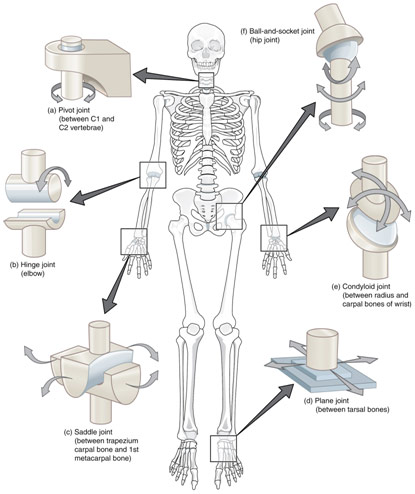
Different Synovial Joints with Examples
RA is an autoimmune disease, meaning the body’s immune system attacks itself in the joints. More specifically, it attacks the synovium, a membrane lining the synovial joints, whose job is to secrete synovial fluid, which lubricates the joint to minimize friction. This causes the synovium to become inflamed and to thicken due to excess white blood cells. This thickening can eventually degrade the cartilage (cushioning material that allows smooth bone movement) and the bone, causing permanent joint damage and loss of mobility as tendons, muscles, and ligaments weaken as well. The exact cause of RA is unknown but genetic and environmental factors have been shown to play a role. For example, having the HLA gene quintuples the chance that a person gets RA; however, it is not a definite factor because many people without the gene develop RA while many people with the gene do not. Some environmental factors include exposure to tobacco and silica that increase the risk of developing RA, but the reasons why this happens are not well understood. Moreover, age and sex are other important predisposing factors because RA usually occurs in people aged forty to sixty and more often in women. One major symptom of RA is joint stiffness, especially in the morning or after long periods of idleness. The stiffness makes the joint hard to use and restricts the joint’s normal range of motion. As mentioned before, some other major symptoms are swelling due to excess fluid buildup, which causes the joints to become red and feel warm to the touch, and pain due to the degradation of the joint, which makes it more tender overall. The defining part of this disease is that it affects the patient’s joints symmetrically, which helps differentiate RA from other types of arthritis. RA can also cause complications ranging from heart problems (clogged arteries which increases the risk of myocardial infarction or stroke) due to inflammation/damage to the endothelium (interior layer of blood vessels), osteoporosis (low bone density that increases the risk of fractures) due to bone damage caused by the inflammation/patient’s physical inactivity because of pain, to carpal tunnel syndrome (compression of the median nerve that goes to the hand) due to inflammation in the region.
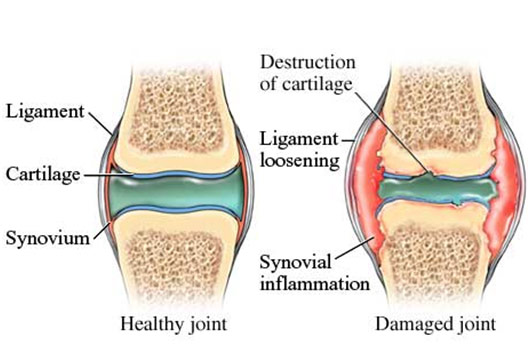
Representation of the Before and After of a Patient with RA’s Joint
Prompt and aggressive treatment is required in order to prevent serious complications that cannot be reversed. There are two major diagnostic tests that physicians can use to determine if a patient has RA; they are the Rheumatoid Factor Test and the Anti-CCP Test that are often ordered concurrently. The Rheumatoid Factor Test checks the presence of the rheumatoid factor antibody, which attacks healthy tissue in the body. 80% of patients with RA test positive for the Rheumatoid Factor Test. The Anti-Cyclic Citrullinated Peptide Test checks the presence of the anti-CCP antibody, which also attacks healthy tissue in the body. 60-70% of patients with RA test positive for the Anti-CCP test, and being positive for the test usually indicates a worse prognosis. Treatment is often with the intent to stop symptoms and prevent further joint damage. Some drugs that are often prescribed for RA are corticosteroids, NSAIDs, and DMARDs. Corticosteroids reduce inflammation, but because of the side effects, doctors tend to use it for a short while before other drugs kick in. Nonsteroidal anti-inflammatory drugs (NSAIDs) similarly reduce inflammation by lowering the body’s production of prostaglandins, which promote inflammation, by inhibiting the COX enzymes. Disease-modifying antirheumatic drugs (DMARDs) similarly reduce inflammation by suppressing your immune system in a specific or general manner, depending on the particular drug, but they may take months to work. Surgery to replace the joint such as total hip or knee replacements can also be done in certain cases when there is too much pain or a lack of adequate function in the joint.
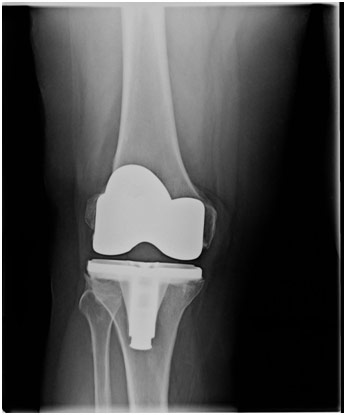
X-Ray of Knee Replacement
Rheumatoid Arthritis is a serious disease that can cause various complications, but it can be managed well with proper therapy. Drugs can put the disease into remission, preventing further damage and allowing patients to lead an entirely normal life otherwise. While there is no cure, for now, we can hope to see one in the future.
References
“Anti-CCP Test (Anti-Cyclic Citrullinated Peptide).” Rheumatoid Arthritis, 25 Feb. 2017, rheumatoidarthritis.org/ra/diagnosis/anti-ccp/. Accessed 20 Aug. 2017.
Bingham, Clifton, and Victoria Ruffing. “Rheumatoid Arthritis Treatment.” John Hopkins Medicine, 4 Apr. 2017, hopkinsarthritis.org/arthritis-info/rheumatoid-arthritis/ra-treatment/. Accessed 20 Aug. 2017.
Dunkin, Mary Anne. “More than Just Joints: How Rheumatoid Arthritis Affects the Rest of Your Body.” Arthritis Foundation, arthritis.org/about-arthritis/types/rheumatoid-arthritis/articles/rhemuatoid-arthritis-affects-body.php. Accessed 20 Aug. 2017.
Healthy Joint Vs. Damaged Joint. Web MD, webmd.com/rheumatoid-arthritis/healthy-joint-vs-damaged-joint. Accessed 20 Aug. 2017.
Mayo Clinic Staff. “Rheumatoid Arthritis.” Mayo Clinic, mayoclinic.org/diseases-conditions/rheumatoid-arthritis/symptoms-causes/dxc-20197390. Accessed 20 Aug. 2017.
“Rheumatoid Arthritis (RA).” Rheumatoid Arthritis, 30 May 2017, rheumatoidarthritis.org/ra/. Accessed 20 Aug. 2017.
“Rheumatoid Factor Test.” Rheumatoid Arthritis, 3 Aug. 2016, rheumatoidarthritis.org/ra/diagnosis/rheumatoid-factor/. Accessed 20 Aug. 2017.
“Types of Joints.” IvyRose Holistic, 1 Aug. 2017, ivyroses.com/HumanBody/Skeletal/Joints/Types-of-Joints.php. Accessed 20 Aug. 2017.
Types of Synovial Joints. Clockwise from Top-right: Ball and Socket Joint, Condyloid Joint, Plane Joint, Saddle Joint, Hinge Joint, and Pivot Joint. Wikipedia, en.wikipedia.org/wiki/Synovial_joint. Accessed 20 Aug. 2017.
http://www.ivyroses.com/HumanBody/Skeletal/Joints/Types-of-Joints.php
https://www.rheumatoidarthritis.org/ra/
http://www.mayoclinic.org/diseases-conditions/rheumatoid-arthritis/symptoms-causes/dxc-20197390
https://www.rheumatoidarthritis.org/ra/diagnosis/rheumatoid-factor/
https://www.rheumatoidarthritis.org/ra/diagnosis/anti-ccp/
https://www.hopkinsarthritis.org/arthritis-info/rheumatoid-arthritis/ra-treatment/

